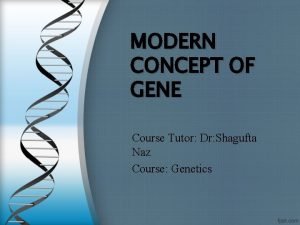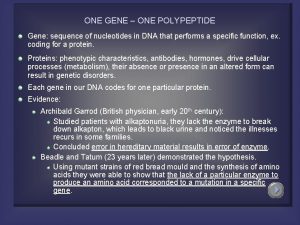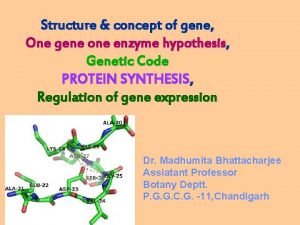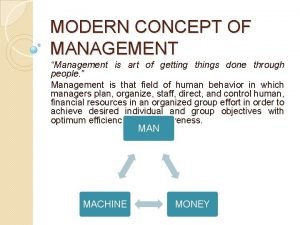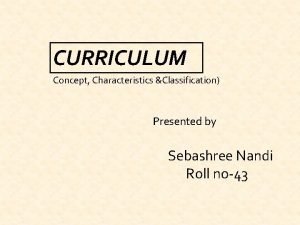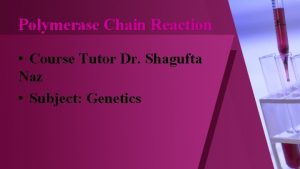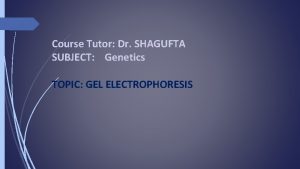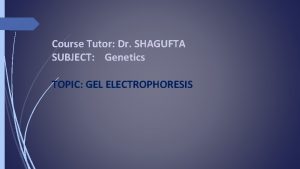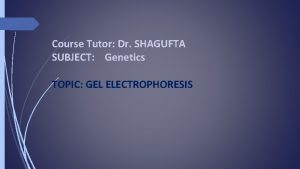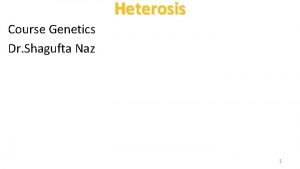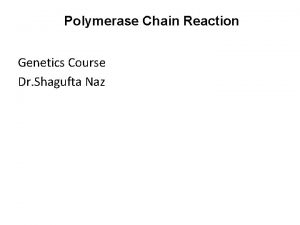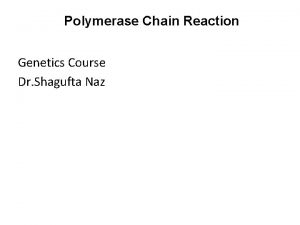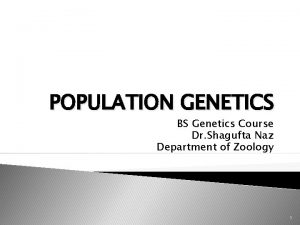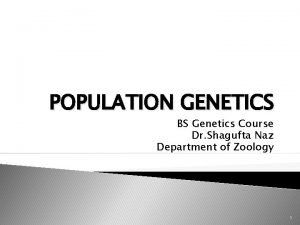MODERN CONCEPT OF GENE Course Tutor Dr Shagufta














- Slides: 14

MODERN CONCEPT OF GENE Course Tutor: Dr: Shagufta Naz Course: Genetics

Gene � A gene may be defined as a segment of DNA which is responsible for inheritance and expression of a particular character. A gene is a segment of DNA that provides instructions for the synthesis of a specific protein or a particular type of RNA


Discovery � Mendel was first to call genes as a unit of inheritance and called them factors. The term “GENE” was derived from the Greek word “GENESIS” which gives the meaning “To be born” and was coined by a Danish Geneticist Wilhelm Johannsen in 1909.

Characteristics of genes : � � Genes are the functional unit of heredity , variation, mutation and evolution. Genes determine the physical as well as physiological characteristics of organisms. Genes are responsible for transferring these characters from parents to the offspring generation after generation. They are situated in chromosomes.

� � � Every gene occupies a fixed position in a chromosome. This position is called a Locus. They are arranged in a single linear order in a chromosomes as beads on a string. They express them by the synthesis of proteins and enzymes, which control cell metabolism. Thus they determine the physical and metabolic characteristics of the cell. Each gene synthesizes a particular protein.

� � � They can produce a duplicate copy of themselves. The process is called replication. In a single gene they may occur in several different forms called alleles. only those genes are known which have their alternative alleles. The alleles may be related as dominant or recessive but not always. Some alleles mutate more then once and have more than two alleles. These alleles are known as multiple alleles.

� � � only two of them are found in an individual because of the presence of two homologous chromosomes of each type. They may show a sudden change in expression from one form to another due to change in composition. This sudden change is called mutation and the new allele is called mutant. In the human being, there about 40, 000 known genes located on 23 chromosomes

Modern concept of Gene : � � Seymour Benzer in 1955 introduced the terms cistron, muton and recon

Cistron ( unit of function ): � � � It is a segment of DNA having information of synthesis of particular protein or RNA It is responsible for the expression of a trait. It can b several (Base pairs) long

Muton (unit of mutation ) � It is a segment of DNA that participates in a recombination through crossing over during meiosis � It consist of a few to many base pairs

Operon � It is a combination of an operator gene, a structural gene or a sequence of structural genes which act together as a unit � Replicon: It is the unit of replication. �

Functions of Gene � � Genes control the phenotypes of the offspring including both the structural and functional characters. Genes control reproduction through their replication. Genes are associated with the aging process. Genes are responsible for producing cancer.

� � Genes undergo mutations and produce polymorphism and variations in the individuals of a population. These mutations are also associated with metabolic disorders and inborn errors of metabolism Control genes regulate transcription of m. RNA and thus regulate the amount of protein synthesized
 Genecourse
Genecourse Gene by gene test results
Gene by gene test results Chapter 17 from gene to protein
Chapter 17 from gene to protein One gene one polypeptide
One gene one polypeptide One gene one enzyme concept
One gene one enzyme concept English bond t junction elevation
English bond t junction elevation Course title and course number
Course title and course number Course interne course externe
Course interne course externe Salesmanship definition
Salesmanship definition Concept of pediatric nursing
Concept of pediatric nursing Slidetodoc.com
Slidetodoc.com Concept of child care ppt
Concept of child care ppt Characteristics of hidden curriculum
Characteristics of hidden curriculum Concepts of stylistics
Concepts of stylistics Venn diagram actual self and ideal self
Venn diagram actual self and ideal self
